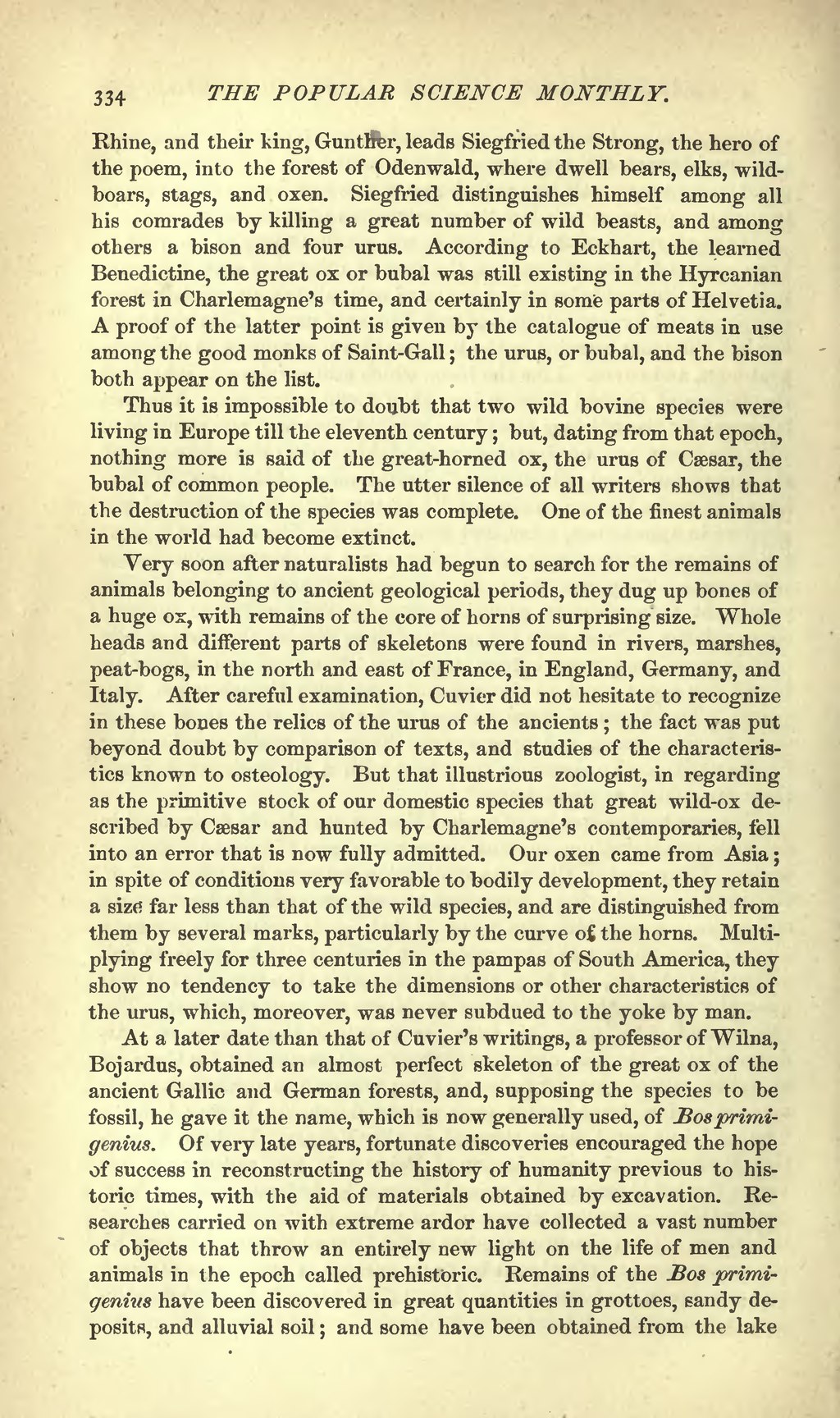Rhine, and their king, Gunther, leads Siegfried the Strong, the hero of the poem, into the forest of Odenwald, where dwell bears, elks, wild-boars, stags, and oxen. Siegfried distinguishes himself among all his comrades by killing a great number of wild beasts, and among others a bison and four urus. According to Eckhart, the learned Benedictine, the great ox or bubal was still existing in the Hyrcanian forest in Charlemagne's time, and certainly in some parts of Helvetia. A proof of the latter point is given by the catalogue of meats in use among the good monks of Saint-Gall; the urus, or bubal, and the bison both appear on the list.
Thus it is impossible to doubt that two wild bovine species were living in Europe till the eleventh century; but, dating from that epoch, nothing more is said of the great-horned ox, the urus of Cæsar, the bubal of common people. The utter silence of all writers shows that the destruction of the species was complete. One of the finest animals in the world had become extinct.
Very soon after naturalists had begun to search for the remains of animals belonging to ancient geological periods, they dug up bones of a huge ox, with remains of the core of horns of surprising size. Whole heads and different parts of skeletons were found in rivers, marshes, peat-bogs, in the north and east of France, in England, Germany, and Italy. After careful examination, Cuvier did not hesitate to recognize in these bones the relics of the urus of the ancients; the fact was put beyond doubt by comparison of texts, and studies of the characteristics known to osteology. But that illustrious zoologist, in regarding as the primitive stock of our domestic species that great wild-ox described by Cæsar and hunted by Charlemagne's contemporaries, fell into an error that is now fully admitted. Our oxen came from Asia; in spite of conditions very favorable to bodily development, they retain a size far less than that of the wild species, and are distinguished from them by several marks, particularly by the curve of the horns. Multiplying freely for three centuries in the pampas of South America, they show no tendency to take the dimensions or other characteristics of the urus, which, moreover, was never subdued to the yoke by man.
At a later date than that of Cuvier's writings, a professor of Wilna, Bojardus, obtained an almost perfect skeleton of the great ox of the ancient Gallic and German forests, and, supposing the species to be fossil, he gave it the name, which is now generally used, of Bos primigenius. Of very late years, fortunate discoveries encouraged the hope of success in reconstructing the history of humanity previous to historic times, with the aid of materials obtained by excavation. Researches carried on with extreme ardor have collected a vast number of objects that throw an entirely new light on the life of men and animals in the epoch called prehistoric. Remains of the Bos primigenius have been discovered in great quantities in grottoes, sandy deposits, and alluvial soil; and some have been obtained from the lake
